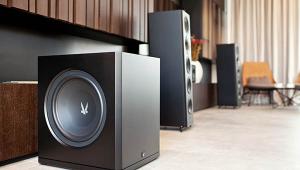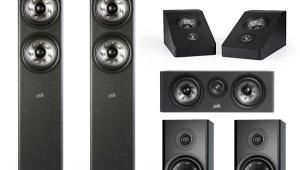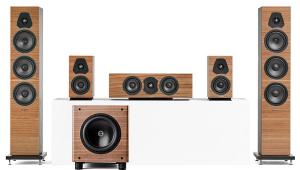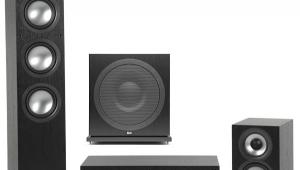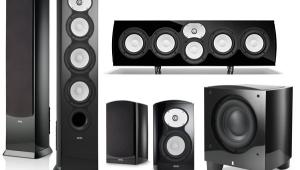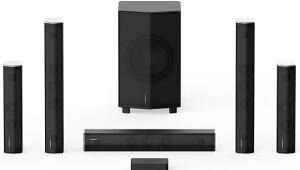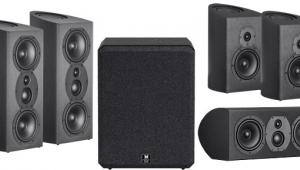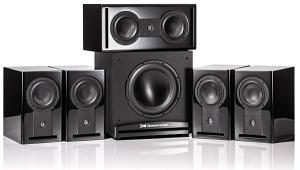Klipsch R-41M Speaker System Review Page 2
Setup
Setting up a 5.1 surround rig using small speakers is actually a lot trickier than setting one up with big speakers that have extended bass. Finding a perfect balance between what's sent to the speakers and subwoofer, respectively, is critical if you want to maintain well-integrated sound. For most of my listening I used a 100-watt-per-channel Onkyo TX-NR787 receiver. I positioned the subwoofer in the front-left corner of my room as I normally do, with the main left and right R-41Ms on 24-inch stands flanking my screen about six feet apart. I found that placing them about 12 inches out from the front wall, somewhat closer than my typical positioning, helped to flesh out the lower midrange while still delivering a well-focused center image. The center speaker was positioned directly under the screen, while the surround R-41Ms were located against the side walls slightly behind the listening position and about a foot above my ears.
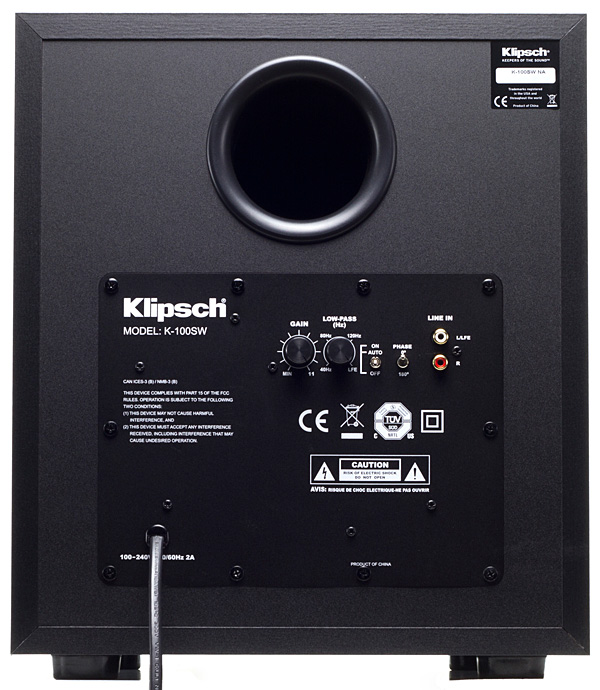
I ran the Onkyo receiver's AccuEQ auto setup to see where it got me but didn't like the results and discarded most of the adjustments and corrections. AccuEQ did provide a good starting point for the system's crossover and level settings, however. Strangely, it set the crossover for the front R-41Ms at 100 Hz, while the physically identical surround channel R-41Ms came in way down at 50 Hz. (I expect this may have been due to the close proximity of the rear-facing speaker ports to the side walls.) After some careful listening, I selected a 120-Hz crossover setting for the four R-41Ms, and a 100-Hz setting for the R-52C center channel, despite it having more limited bass extension on paper. Once dialed in, I experienced a seamless blend with stereo music, and the sub never drew attention to itself even when playing loud action movies.
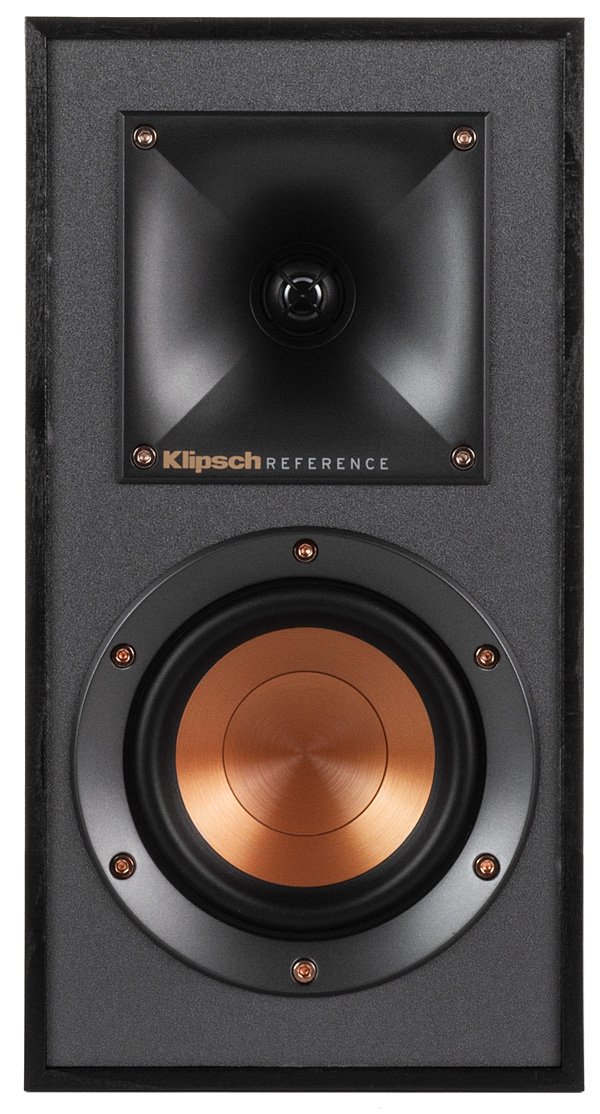
Performance
The Klipsch system benefitted significantly from a few days of nonstop playing, and once it was fully broken in, I started out my listening with two-channel music. Compared with the glorified mono of a typical soundbar, a main benefit to a discrete system like this is an ability to deliver a true stereo image with accompanying depth and spaciousness. The title track from Janis Ian's Breaking Silence album, streamed via Tidal, demonstrated this perfectly, with her voice sounding upfront and intimate and the acoustic guitars and super-dynamic drums expanding the sonic space past the outer edges of the speakers and well back beyond the front wall. The R-41Ms have a lively, upfront sound—just a bit bright but not overly so—that allows them to connect exceptionally well with the listener. At no time did I hear any of the dreaded horn coloration that detractors like to talk about. I also kept having to remind myself that these were $199/pair speakers, albeit ones supplemented by a subwoofer. I did try listening with the R-41Ms running full-range without the sub, and while I expect I would become accustomed to the lack of bass, the sound I heard wasn't truly satisfying or room-filling. This would be less of an issue in a nearfield configuration like a desktop system.
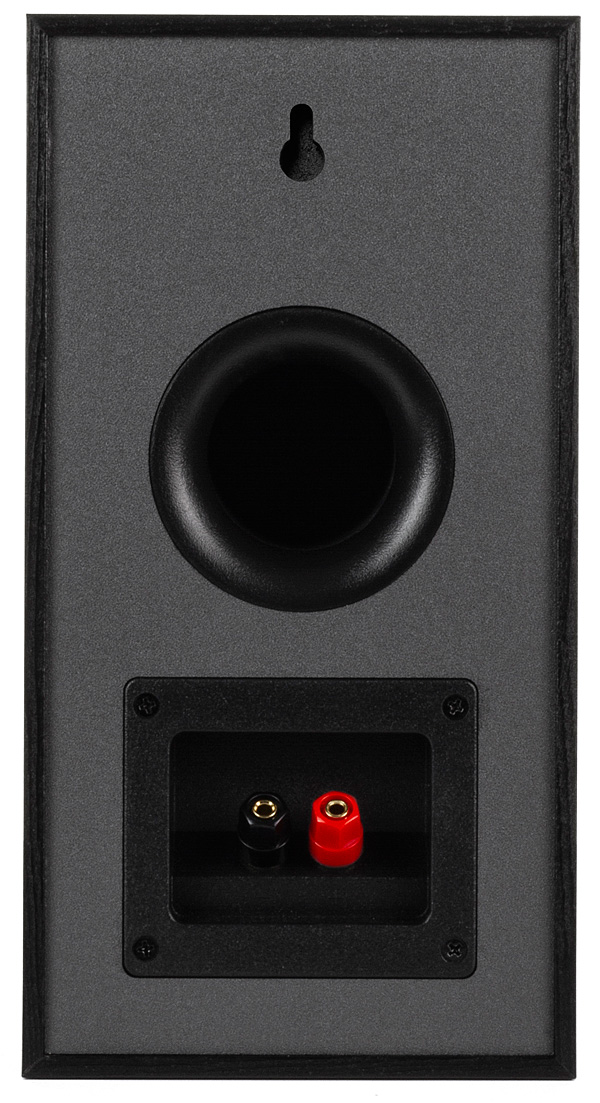
Shifting gears to classical music, I played a Decca recording of Chabrier's España conducted by Ataúlfo Argenta. With the Klipsch system, this big, colorful piece for full orchestra had plenty of bottom-end punch and a lively sense of dynamics, but it also highlighted the system's main weakness: a slightly lean midrange that contributed to a glossing over of some of the rich tonal color and articulated detail I know is in the recording. Nevertheless, the sound always remained enjoyable and exciting.
For some 5.1 sound action, I fired up the opening scene from Avengers: Infinity War. As with many recent Disney surround mixes, you need to crank this one up to bring out the dynamics, but then it really comes to life. As Thanos and Hulk fought over possession of the Earth Stone, the Klipsch system delivered sound with impressive scale. Soundtrack dialogue was clear, and the orchestral score supplemented the action with loads of deep bass drum thwacks. The sense of spaciousness and deep envelopment I experienced when watching Avengers: Infinity War is something no soundbar can deliver as effectively as a true 5.1 system like this.
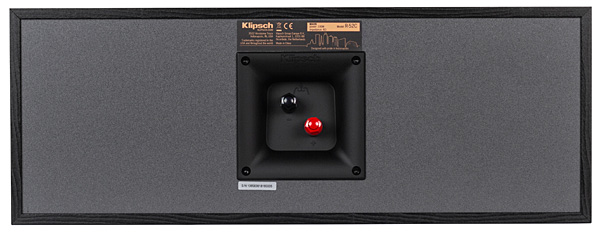
For a more atmospheric soundscape, I watched the final episode from season one of Stranger Things on Netflix. In a scene where the police chief and Joyce search the Upside Down world for her son Will, an eerie, liquid sense of space filled the room, and the deep bass rumblings coming from the sub underpinned the sound effectively. At the same time, the system's center speaker delivered dialogue in a clear and focused manner.
Conclusion
Building a kick-ass home theater with a limited budget can be tricky, but the results can clearly be worth it if you make an effort to install a real 5.1 surround system. Klipsch has long been a leader in delivering lots of sound in a highly efficient manner, and as this R-41M- based system demonstrates, they can do it in a compact and very affordable package.
